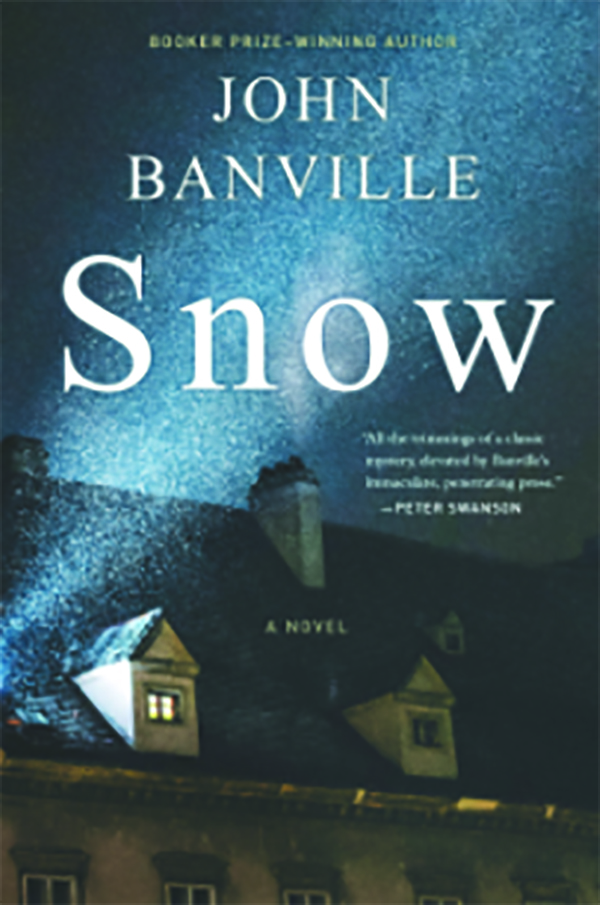The Irish writer John Banville, considered one of the world’s best living novelists and a possible contender for the Nobel Prize for Literature, is, in fact, two writers. Or rather: Two writers are Banville. Like more than a few authors before him, Banville prefers to compartmentalize his work with the aid of a pseudonym. He publishes what he regards as his more serious literary work, such as 2005’s The Sea, which won the Booker Prize, under his own name. As “Benjamin Black,” he publishes crime novels, with almost a dozen to date, most featuring a Dublin pathologist, Quirke, as the protagonist. Banville has said that he writes his genre novels much more quickly than his “literary” ones; publishing them under an (openly known) pseudonym is a way of signaling that they shouldn’t be held to the same critical standard.

All of which makes it slightly puzzling that Banville has decided to publish his latest novel, a fairly conventional murder mystery in the English “locked room” tradition, under his own name. In fact, the novel, Snow, is not only a murder mystery but one drawing on the genre’s greatest and most well-worn cliche: the discovery of a dead body in the library room of a country estate. The patriarch of the house and the first of a number of possible suspects is one Col. Osborne (not Col. Mustard, as in the board game Clue, but close enough). Presumably in an attempt to disarm the central cliche, Banville’s characters themselves remark on it: “It’s a library,” a police officer remarks, “an actual f–king library, and there’s a body in it!”
The murder victim is a Catholic priest, which is significant given that the novel is set in rural Ireland in 1957. Our protagonist is detective inspector St. John Strafford, who has been sent from Dublin in the middle of a snowstorm to investigate and perhaps cover up what is, in a conservative, deeply Catholic country, a shocking and politically explosive crime. Strafford, whose first name is pronounced “Sinjun,” is Protestant, a minority in Ireland and an oddity in the ranks of the Irish police. Other characters he encounters instantly mark him as different: by his accent, by the way he takes his tea, by his mere appearance. Banville’s decision here is clever; as an outsider, Strafford is well positioned to act as interlocutor, explaining subtle issues of class and religion that might otherwise escape a non-Irish reader.
Yet Strafford is an insider of sorts, too, with an important insider’s knowledge. The Osbornes, in whose house the dead priest is discovered, are members of the fading Protestant Anglo-Irish gentry, though they are considerably more invested in their social class than Strafford, who is a loner happy with detective work and content to be a downwardly mobile black sheep and a mild class traitor. In the course of Strafford’s investigation, we meet a nicely drawn cast of eccentrics and grotesques, most suspicious and with any number of reasons for murdering the priest: Col. Osborne’s second wife, Sylvia, who is strange and possibly mad; Osborne’s coquettish daughter, Lettie, and pretentious son, Dominic; a semiferal orphan, Fonsey, who works as groundskeeper; the local innkeeper and his wife; and the inn’s buxom and lonely barmaid. Banville stirs in various red herrings in a (not wholly successful) effort to keep the reader guessing at the murderer.
Although Banville has a reputation as a consummate prose stylist, Snow is mostly standard detective fare. But snatches of elegance come through, particularly in his descriptive language. A woman has skin “the color of skimmed milk into which had been mixed a single drop of blood.” The branches of a tree are “laden” with “strips of snow that glistened like granulated sugar.” The winter sun looks “impossibly shrunken, a flat gold coin nailed to the sky low down at the side.”
Other times, he has a surprisingly tin ear, particularly in passages meant to indirectly convey interior monologue. We’re told in passing, in what feels like a rather throwaway effort at interiority, that Strafford has “a special fear of being trapped in a burning building — what a way to die that would be!” Most human beings have this fear, and the jaunty exclamation feels almost insulting.
In another passage, Strafford, making his way through a copse of trees, feels like “the hero in a fairy tale, hacking his way toward the enchanted castle in the magically still and frozen forest.” Coming upon a bloodstain in the snow, it puts him in mind of “the Wicked Stepmother’s bloodred, flesh-white, irresistible apple.” Would this really be the first thought of a police detective, no matter how intellectual and introspective, on seeing a bloodstain near the site of a murder? Banville adds, unnecessarily, that Strafford “did not think it would be a sleeping beauty, reclining on her virgin couch, that he would find here today.” Ruminative yet hackneyed passages such as this feel more Benjamin Black than Banville, or perhaps like the product of a tug of war between them.
Banville redeems himself with a surprise interlude, told in the first person by an unexpected character. In addition to providing important context for the earlier story, the interlude includes a truly chilling and plausible account of sexual abuse from the perspective of a perpetrator, made all the more chilling and plausible because it is filtered through his rationalizations.
In the end, Snow is a brisk and satisfying, if not entirely memorable, murder mystery. I suspect it won’t be the last novel featuring Strafford, and while it only slightly rises above its genre peers written by far less acclaimed novelists, I’ll probably be happy to read more crime novels from Banville, whether published under his own name or that of his pulpier alter ego.
J. Oliver Conroy’s writing has been published in the Guardian, New York magazine, the Spectator, the New Criterion, and other publications.

